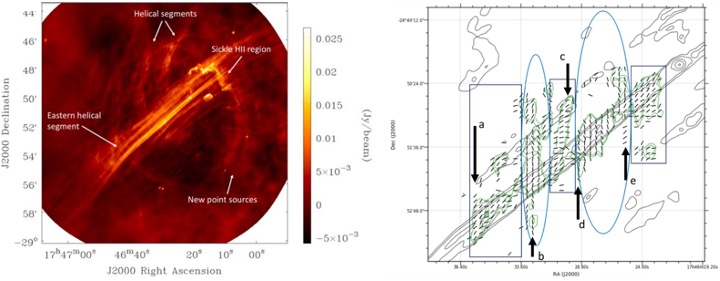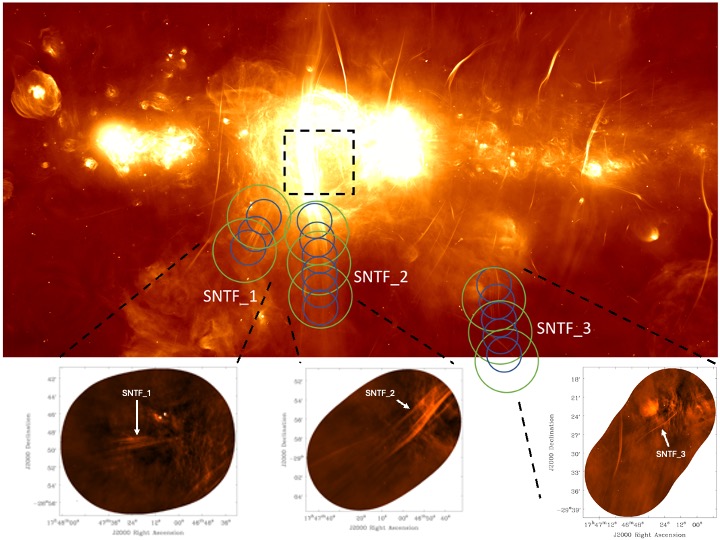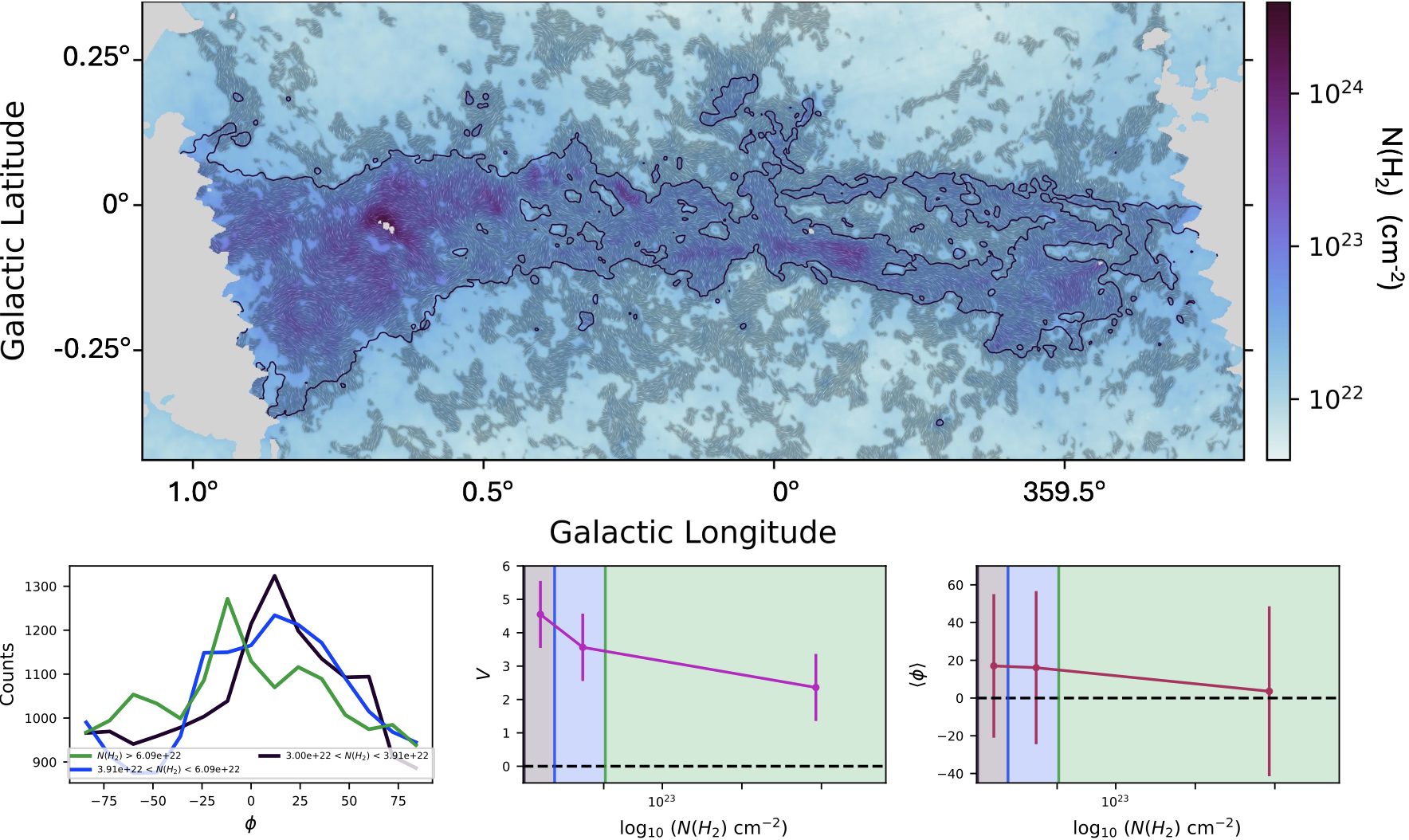
The brightest NTF, known as the Radio Arc. On the left is the radio emission, obtained from the Very Large Array, showing the morphology of the Radio Arc filaments. On the right is shown the total and polarization contours (black and green contour levels) with the derived magnetic field shown as black dashes.

I have also studied fainter NTFs located throughout the Galactic Center. The top panel shows the radio emission of the GC as observed using MeerKAT. The lower panels show VLA observations I used to study a population of fainter NTFs.
The Non-thermal Filaments
The Non-Thermal Filaments (NTFs) are unique filamentary structures so far only observed in the Galactic Center (GC). Much remains unknown about the NTFs, including why they appear in the central region of the Milky Way.
To deepen our understanding of the NTFs I have studied their polarization and magnetic field properties to determine their role in the GC and possible mechanisms that generate the relativistic electrons illuminating them.
To do so I have obtained, calibrated, and imaged Very Large Array (VLA) and Australia Telescope Compact Array (ATCA) polarimetric observations of multiple NTFs in the GC. I first studied the prominent Radio Arc NTF, discovering an alternating magnetic field pattern. My studies of the Radio Arc can be read in greater detail in these papers: Paré+2019, Paré+2021.
My work on the NTFs reveals that they can likely be subdivided into two distinct sub-populations: NTFs that are illuminated by extended sources of relativistic electrons and NTFs that are illuminated by compact sources of relativistic electrons. My studies of the larger NTF population and efforts to uncover the source of relativistic electron acceleration can be read here: Paré+2022, Paré+2024b.
I am now exploring what the detailed natures of these extended and compact sources could be, with possibilities including magnetic reconnection at the surface of Galactic Center molecular clouds and pulsar wind nebulae.

The magnetic field inferred from dust polarization observed by SOFIA. The background greyscale image represents the intensity of cool dust in the GC. Blue dashed lines are the FIREPLACE magnetic field orientations, with previous magnetic field measurements obtained from other observatories also shown. The FIREPLACE survey represents a significant step forward in our understanding of the behavior of the magnetic field in molecular clouds in the Galactic Center.

Statistical analysis of the orientation of the magnetic field with the GC molecular structures. Top panel shows the column density in the GC with the flowline representation of the FIREPLACE magnetic field overlayed. The relative orientation is only analyzed in high column density regions of the GC, as indicated by the black contour. Bottom panels show the result of the statistical analysis of the magnetic field orientation indicating that the GC magnetic field is predominantly parallel to the column density structure.
Galactic Center Molecular Clouds
The star formation efficiency is far lower in the Galactic Center than would be expected given the high densities and masses observed there. The reason for this depressed efficiency remains unclear.
One possibility could be the elevated magnetic field strengths observed in the GC. To help uncover the nature and role of the magnetic field, I have reduced and analyzed a far-infrared polarimetric data set obtained using the Stratospheric Observatory for Infrared Astronomy (SOFIA). This work was conducted as part of the SOFIA legacy program known as the Far-Infrared Large Area CMZ Exploration (FIREPLACE) Survey. The reduced FIREPLACE data set is publicly available here.
Since my initial reduction and presentation of the FIREPLACE data set, I have conducted a more robust statistical analysis of the GC magnetic field using the techniques of the Histogram of Relative Orientation (HRO) and the Projected Rayleigh Statistic (PRS). This study reveals a generally parallel orientation between the magnetic field and GC molecular structures, which reveals the importance of shear on the GC molecular clouds. The presentation and initial analysis of this data set is in Paré+2024a.
I am continuing to analyze the FIREPLACE and other far-infrared / sub-millimeter data sets to enhance our understanding of the mechanisms impacting molecular clouds in the GC. In particular, I am now incorporating magnetohydrodynamic simulations with the FIREPLACE data set to study how the magnetic field strength varies throughout the GC. This work can be read in Paré+2025.